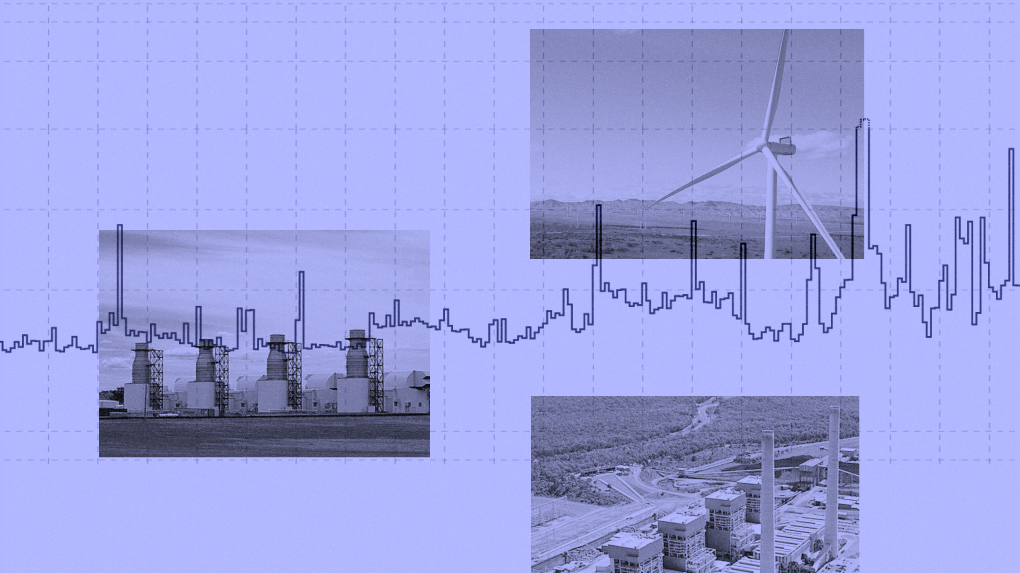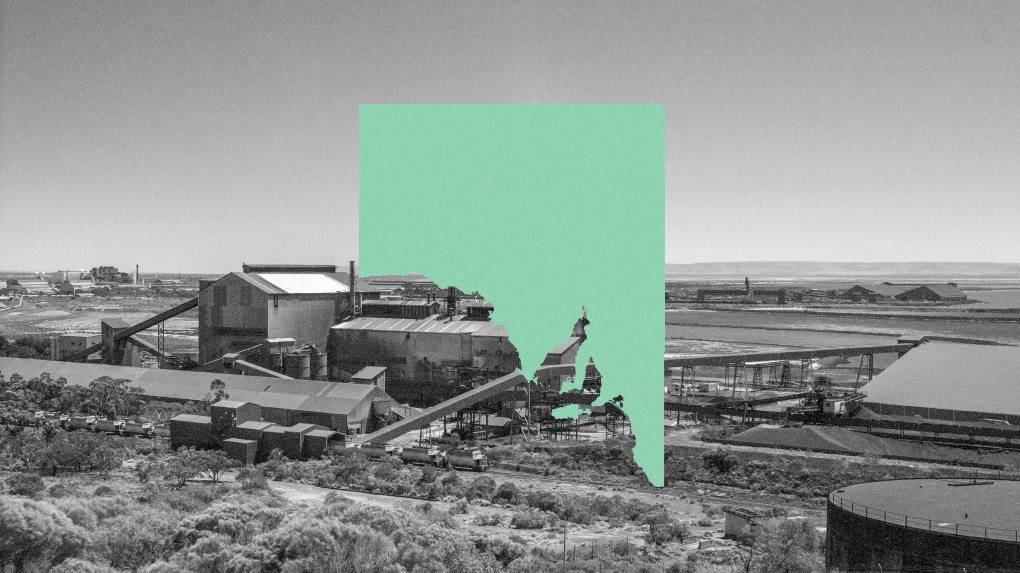Transcript:
The world’s move to decarbonisation represents an enormous transition; likely the largest Australia has had to make or will ever have to make. Being the world’s largest exporter of coal and gas, combined, makes this point clearly.
The title of today’s discussion is thus appropriate; are we facing an opportunity or a threat?
In my view Australia is at a point where it has a choice. The world’s seemingly inevitable move to decarbonisation should be a significant opportunity, the Superpower opportunity, but there are forces that could prevent this.
I see broadly four groups of opinion on how Australia should approach the move to net zero. If any of the first three prevail Australia - and the world - could lose this significant opportunity.
First, those who in essence oppose moves to decarbonisation, and want to maintain our current strong advantage in the export of fossil carbon products.
They argue that moves, such as pricing carbon emissions via The Superpower Institute’s (TSI’s) proposed Carbon Solutions Levy, will simply damage our current fossil fuel exports and see others supply these products with higher world emissions. This latter proposition is simplistic because our fossil fuel exports are being sold into world markets; perhaps a few marginal projects will close but most will see lower profits as they pay for the damage their products cause. By opposing moves they see as a threat to current fossil fuel production, however, this Group opposes positioning for the coming zero fossil carbon world.
Second, are the market fundamentalists who, using poor economics, oppose all forms of government intervention. Drawing on what they see as industry policy lessons of the past they say “let the market decide our future industry winners”, ignoring the need to use basic economics and allow for externalities. Without such allowance the market will pick losers.
They will say that iron produced with fossil fuels is cheaper than green iron, so that is the end of the debate. They do not consider the cost imposed on society from carbon emissions and who should pay for that. They also do not consider the external benefits created by early investors, which generate industry-level knowledge. In the market fundamentalists’ arguments, there are elements of sidelining decarbonisation as an issue to be dealt with separately from broader economic issues. They do not let this “side issue” get in the way of the usual economic issues we should be focussing on.
Third, we have the “Made in Australia” group. The problem here is that it is unclear what this group seeks. Make everything we need, import nothing? What is the framework in this slogan for deciding what Australia does, and does not, make in Australia?
Should government support be provided to ensure we make our own computers, cars, clothing? Without a clear framework Australia will take a series of ad hoc measures that invite rent seeking by businesses, raise Australia’s cost structure and lower our productivity.
The Government’s current rhetoric around “Made in Australia” suggests there is a focus on projects relevant to the net zero transition. But again, what does this suggest we do? Is it “any green project deserves taxpayer support”? Do we want the entire green supply chain made in Australia, for example, solar panels, wind farm components, batteries and electrolysers? Is it suggested that Australian industry must adopt a “buy local” policy?
In addition to the ills already mentioned, such an approach will destroy the Superpower opportunity. It is damaging in three dimensions. The first, and most important, is that it will remove Australia’s ability to take advantage of its clear comparative advantage in making green energy-intensive exports which can boost Australia’s prosperity and reduce world emissions.
How can we have low cost renewable energy if we are saddled with high cost solar panels, wind farms and electrolysers through a “buy local” imperative?
Under this form of “Made in Australia” approach, Australia will not achieve the lowest cost inputs to the supply of such goods, so Australia will not be cost competitive in their supply, and the green traded products will not be as cost competitive with existing fossil fuel-made products.
The second is that it will also displace scarce budget dollars to assist investments in Australia’s comparative advantage. Third, Australia already faces a shortage of labour as the Government’s Skills Strategy recognises. Having people working in areas where Australia does not have a comparative advantage, leaves us short of workers in industries that we do.
The fourth group, the group I, The Superpower Institute, and a growing list of others belong to, see opportunities opening up for Australia because the world’s net zero transition brings new areas of comparative advantage for Australia. We only want goods to be now made in Australia where the economics have “flipped”, which we see as the Superpower opportunity.
The easiest way to explain this is to use the example of iron metal. Australia currently exports the iron ore, the metallurgical coal used to reduce the iron ore to iron metal, and both thermal coal and gas which can be the heat sources of the iron making process.
Australia is the largest exporter of the first two products, and is a major exporter of the latter two. The “Made in Australia” camp, as some are expressing it, would have us use all these Australian ingredients and make iron metal in Australia now. But there is no logic to government intervening in the choices the market has made; it seems best for Australia in the fossil carbon world to do as we are.
Indeed, to use tariffs to keep cheaper imports out, we would undermine the advantages of other industries and see lower wages by having workers in always struggling industries who would be constantly lobbying government for help.
In the coming zero carbon world, however, it makes sense to now make green iron in Australia. Green iron will very likely need green hydrogen as the reductant that gets the iron ore into iron metal. Making green hydrogen requires a massive amount of renewable energy to power electrolysers that separate the H2 (Hydrogen) from the O (oxygen) and to provide the heat for the green iron making process.
Green iron should be made in Australia because the economics flip. For example, exporting metallurgical coal raises its cost by perhaps 5-10% while exporting hydrogen more than doubles its cost via a complex and difficult process.
Likewise, renewable energy should be used close to where it is produced; it is certainly difficult and expensive to export it from Australia. All overseas studies that I am aware of suggest that Australia is likely the cheapest place in the world to make green iron. And those seeking to make green iron by importing hydrogen, those studies say, will be uncompetitive.
The world needs Australia to make many green products in Australia. This is because we have massively more low cost renewable energy resources than we need. We can be an exporter of energy intensive green products.
Countries such as Japan, Korea, most of Europe and even China do not have sufficient renewable energy resources to make all the electricity they need domestically. They will need to either import renewable energy, ammonia as a derivative of hydrogen and/or use nuclear energy - all at great cost - to meet their domestic electricity needs.
It follows that they will need to import goods with the energy intensity embedded in them, such as green iron, green aluminium, green fertiliser, green silicon or green aviation fuel to meet their net zero targets; all are examples of the Superpower industries. If Australia takes itself out of this game by a strict “Made in Australia” approach there will be fewer countries able to meet this need and world emission reduction will suffer significantly.
In this fourth Group there is a clear role for Government, contrary to the view of the market fundamentalists, because there are two large problems facing those who would make green energy intensive products anywhere in the world.
First, as already stated, iron produced using fossil fuel is currently cheaper because fossil carbon produced iron metal does not pay for the cost to the environment of the carbon emissions that occur in the process.
It is rather silly that most countries want to reduce carbon emissions because of the damage caused to our climate, but will not deal with this price difference via a price on carbon emissions.
Fortunately, the Europeans are doing this, and their Carbon Border Adjustment Mechanism (CBAM) creates a great opportunity for Australia, as Dr Ingrid Burford will next explain.
The second problem is that, while green iron making technology is proven, it has not been done at scale. Those who go first will inevitably make mistakes from which others will learn. Those mistakes will be costly for the first mover but a huge benefit to those who come after.
This “learning by doing” is a positive externality which should be recognised by government by assisting the first movers. Given the urgency of the need to decarbonise key products such as steel which currently causes 7% of world emissions, this externality is an important one. Such assistance naturally falls away after the first, say, two or three projects. This is the focus of TSI’s Superpower Investment Innovation Scheme, or SIIS.
The TSI sees four requirements for Government assistance to achieve the Superpower opportunity.
One, that it is aimed at projects in industries in which Australia has or will have a comparative advantage due to the net zero transition; the Superpower industries. Australia was blessed with great fossil fuel resources in the form of coal and gas. It is also blessed with perhaps the best solar and wind resources in the world and the land to put them in, plus enormous biomass potential where the sustainable carbon can be made largely from planting trees in the semi-arid parts of Australia with little or no other land use.
Second, the assistance needs to address known positive (first mover learning, addressed by the SIIS) or negative (pricing the cost of carbon emissions) externalities.
Third, the assistance needs clear qualification rules, with limited room for government ministerial discretion and so rent seeking.
Fourth, the Government assistance needs to be at least fully funded so that Australia maintains a strong budget position and so retains its low cost of capital which is crucial for a comparative advantage in the capital intensive Superpower industries.
As an aside, it is worth noting that the domestic decarbonisation objective is currently being slowed by the slow rollout of transmission lines. This will not be a problem for the Superpower export industries.
Renewable energy can be well away from the current grids in areas where concerns about transmission lines will not exist. This is renewable energy for industry, not homes needing 24/7 power. Indeed, given the high cost of electricity from the current grid there is benefit in this being the case.
As another aside, more higher value goods will be made in Australia if we take advantage of the Superpower opportunity.
That is the outcome, not the rationale for assistance. Indeed, the current debate has raised historical “industry policy” debates. The dreadful past examples in Australia of governments continually propping up struggling industries should not blind us to the need to address significant externalities so that markets do not pick losers.
It is unclear what the Government means by “Made in Australia”. Sometimes it sounds like they are in Group 3, sometimes Group 4. If they are in Group 3, that will kill the Superpower ambition.
How can we have low cost renewable energy if we are saddled with high cost solar panels, wind farms and electrolysers through a “buy local” imperative?
The Superpower strategy is export focussed. The US with its IRA is internally focussed. The Group 3 version of “Made in Australia” is internally focussed. Australia cannot afford to follow this lead. Nor will it suit the world for this to happen.
Just as the US Inflation Reduction Act is strangely named, however, then hopefully the Government’s “Made in Australia Act” is also. Let us see.
If the Government is in Group 4 - as we should all hope - and is targeting producing goods in which Australia now has a comparative advantage in the net zero world, through clear qualification mechanisms that address well defined market externalities, the Government must be applauded by all who possess sound economics, and desire Australian prosperity and reduced world emissions.
We will wait and see on May 14, Budget night, which group they are in.
Rod Sims
Chair, The Superpower Institute
Rod Sims is Enterprise Professor at the Melbourne Institute of Applied Economic and Social Research, Faculty of Business and Economics, University of Melbourne, and Chair of The Superpower Institute. He previously chaired the ACCC (2011-2022), served as Deputy Secretary (Economic) in the Department of Prime Minister and Cabinet, and Principal Economic Adviser to PM Bob Hawke (1988-1990).



